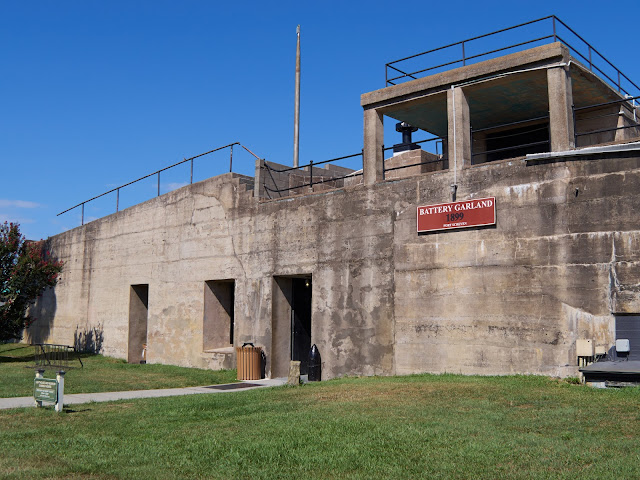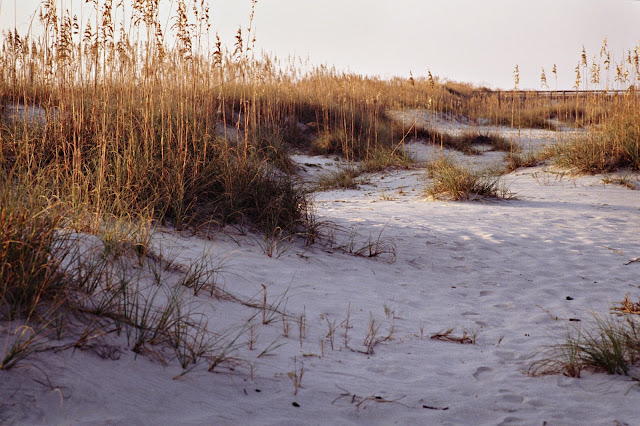Shrimp boats in Lazaretto Creek on the way to Tybee.
Tybee Island is a great destination, but there's also good stuff to see along the Islands Expressway from Savannah to the island. Including one you should not miss.
Preparing to fire the cannon at Fort Jackson.
Leaving Savannah via East President Street/Islands Expressway, turn left on Woodcock Street and follow it to Ft. Jackson Road and Old Fort Jackson, built in 1808 at a strategic location on the Savannah River as part of President Thomas Jefferson’s coastal defense system. After the fall of Fort Pulaski in 1862, Fort Jackson became the headquarters for all the river defenses protecting Savannah during the Civil War. It fell to Federal forces in 1864, as General Sherman culminated his March to the Sea by taking Savannah.
The U.S. War Department abandoned the fort in 1905 and it is now operated by the Coastal Heritage Society as a museum dedicated to education and military history. Open seven days a week, 9 a.m. to 5 p.m., a demonstration of muzzle-loading cannon firing is given at 11 a.m. and 2 p.m. daily. There are also interactive programs for kids, adults, and families.
Moat and wall at Fort Pulaski.
From Fort Jackson, go back to Islands Expressway and go left (east) for ten miles to Fort Pulaski National Monument on the left.
Completed in 1847, its seven and a half–foot solid brick walls, backed up by concrete piers and earthworks, were considered impregnable. At the onset of the Civil War, it was seized by the State of Georgia, which then transferred the fort to the Confederacy. In November, 1861, Federal forces established a beachhead at Hilton Head Island, causing Confederate forces to abandon nearby Tybee Island.
Inside the walls of Fort Pulaski.
The Federals brought in something new: rifled cannon capable of far greater range and power than anything previously known, and in April, 1862, set up batteries on the northwest shore of Tybee and swiftly proceeded to breach the “impregnable” walls of Fort Pulaski. The Confederate commander surrendered in just 30 hours. It was a turning point; the beginning of a new era in warfare.
From Fort Pulaski, continue east on Islands Expressway for about two miles, crossing Lazaretto Creek as you go, and turn right on Catalina Drive, then immediately left on Estill Hammock Road to the Crab Shack, a don't-miss destination!
Lunch at the Crab Shack. Don't miss it!
Voted Savannah’s best seafood since 1998, the super-casual atmosphere at the Crab Shack might make you think you’ve stumbled upon a pirates’ hangout, but the food and service are worth walking the plank for. If you’ve never had their low-country shrimp boil, you are going to hate yourself for all the years you’ve wasted.
Also, don't miss the Tybee Island sunrise. It's worth getting up early for!
About the equipment: The photographs of the shrimp boats and sunrise were made with Olympus OM film cameras and (probably) Kodachrome 64 film, scanned with a Konica-Minolta DiMage 5400 scanner. For the other photos, I used an Olympus E-M5 digital camera with a Panasonic Lumix Vario-G 14-140mm lens.
Visit my online gallery at https://davejenkins.pixels.com/
Signed copies of my book Backroads and Byways of Georgia
are available. The price is $22.95 plus $3.95 shipping. My PayPal
address is djphoto@vol.com (which is also my email). Or you can mail a check to 8943
Wesley Place, Knoxville, TN 37922. Include your address and tell me how
you would like your book inscribed.
Photography and text copyright 2001-2025 David B.Jenkins.
I post Monday, Wednesday, and Friday unless life gets in the way.














%20panel.jpg)















